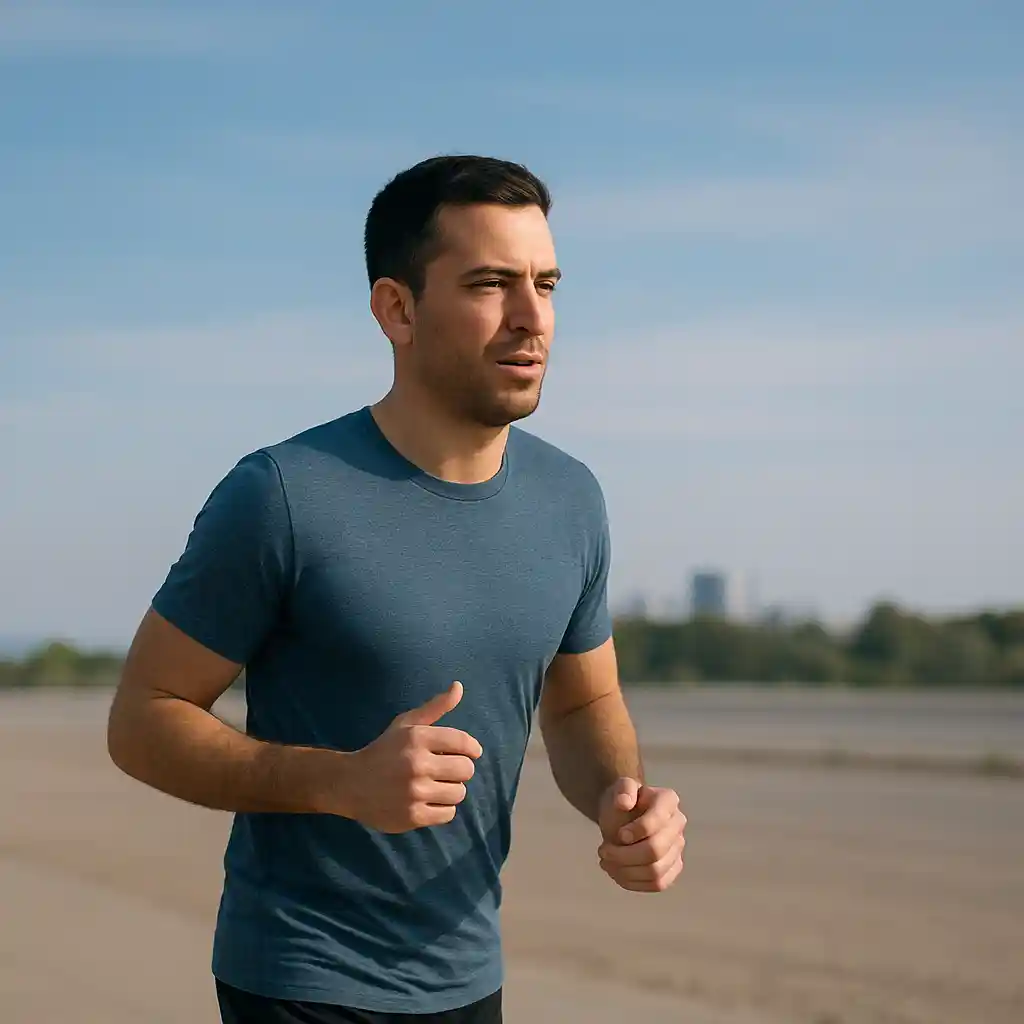When I first started running and tried to control my pace, I noticed something interesting. Even though I could maintain a steady speed and my legs felt fine, my lungs and heart didn’t seem to agree. I would hit a wall pretty quickly and end up out of breath. So, I slowed down and realized that for running to feel sustainable, everything—legs, lungs, and heart—needed to work together. That’s when I started learning how to train my lungs too. And that’s when everything changed. I discovered just how much breathing impacts running, and things finally started to click.
Turns out, how you breathe while running can make a huge difference in how long you last—and how much you actually enjoy it. Understanding the difference between nose breathing vs. mouth breathing was a game-changer for me.
Why Breathing Matters When You Run
Running isn’t just about moving your legs—your breathing controls your energy. The way you breathe affects:
- How much oxygen your body gets
- How fast you fatigue
- Your heart rate and stress levels
- Your rhythm and running form
Nose Breathing vs. Mouth Breathing: What’s the Difference?
Let’s break down the difference between the two. I tested both while jogging, and here’s what I found:
Nose Breathing While Running
How it works: Inhaling/exhaling solely through the nose.
Benefits:
- Filters and humidifies air (less irritation for lungs).
- Boosts CO2 tolerance (helps oxygen reach muscles more efficiently).
- Encourages diaphragmatic breathing (deeper, calmer breaths).
- Balances effort (prevents overexertion).
Best for:
- Easy-paced runs (jogs, recovery runs).
- High-altitude or cold-weather running (protects airways).
It’s not easy at first, especially if you’re new to running or slightly congested. But over time, I felt like I had more control over my breath and pace.
Mouth Breathing While Running
How it works: Rapid inhales/exhales through the mouth.
Benefits:
- Delivers maximum oxygen quickly (useful for sprints/high intensity).
- Feels natural during exertion (instinctive for many runners).
Drawbacks:
- Dries out airways (can trigger coughing/thirst).
- May cause hyperventilation (leads to side stitches).
Best for:
- Speed workouts or races.
- When you’re struggling for air.

The Nose-Breathing Test
- Start with a slow jog or brisk walk.
- Close your mouth and breathe only through your nose.
- If you feel air-starved, slow down until it feels manageable.
- Gradually increase distance/time as you adapt.
1.The 3:2 Rhythm Technique (For Steady Runs)
- Inhale for 3 steps, exhale for 2 steps (through nose or mouth).
- Syncs breath with stride to reduce side stitches.
2. The “Talk Test” (For Pace Control)
- If you can’t speak a short sentence comfortably, you’re going too fast.
- Adjust speed to maintain nose or mixed breathing.
3. High-Intensity Switch (For Sprints/Hills)
Return to nose breathing during recovery.
Use mouth breathing during bursts of effort.
Why Nose Breathing Feels Hard (And How to Improve)
At first, nose breathing might feel restrictive—that’s normal! Here’s why:
- Your body is used to over-breathing (taking quick, shallow mouth breaths).
- CO2 tolerance is low (nose breathing trains your body to use oxygen efficiently).
Fix it with:
- Daily deep-breathing exercises (try 5 mins of nose-only breaths at rest).
- Patience (it takes 2–4 weeks to adapt).
Extra: Breathe From Your Belly, Not Your Chest
Chest breathing made me feel tight and anxious. Once I learned to breathe deeply from my diaphragm (aka belly breathing), my endurance went up and side stitches went away.
If running feels exhausting, don’t assume it’s just your legs. How you breathe affects how long and how comfortably you can run. For me, the shift to nose breathing was the secret to running without getting tired so quickly.
Start small, be consistent, and you’ll feel the difference. Who knew that something as simple as breathing through your nose could make running actually feel good?
